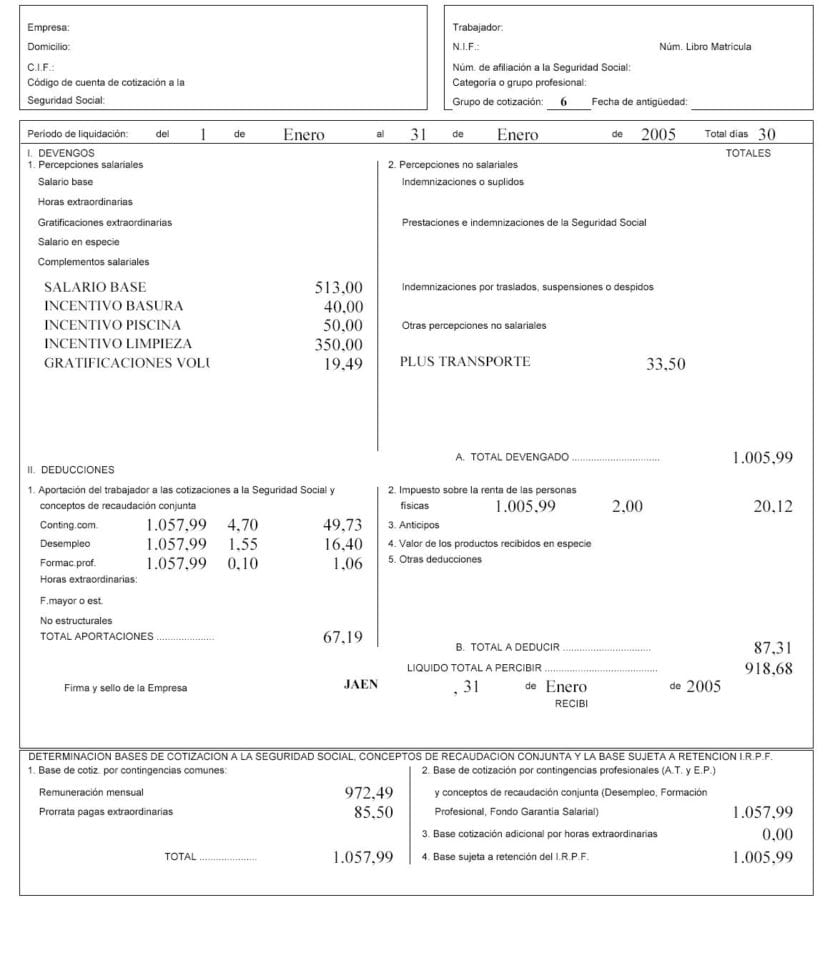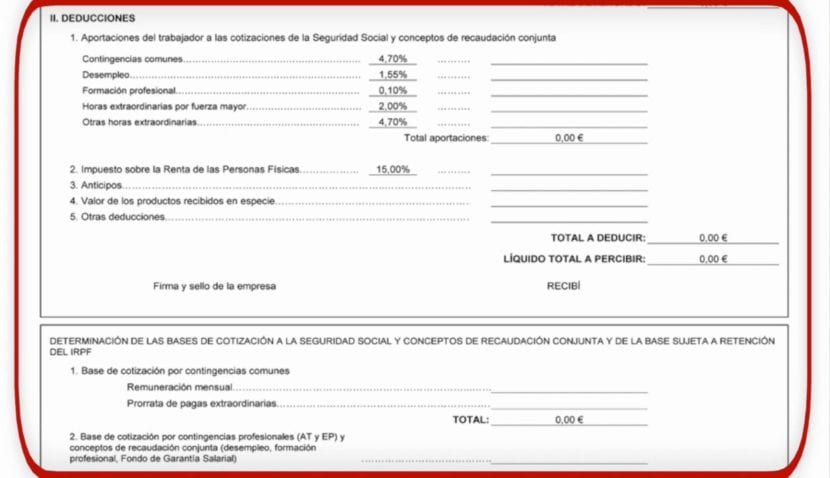
There are many workers around the world who have doubts when reading your payroll especially people who doubt that payments are being made correctly. In order to make sure that they are really paying you the amount that the company should give you and in addition to that the rest of the data is correct, it is important that you learn to read the payroll and you know what each of the data found in it corresponds to.
Most people see their payroll as the amount of money to be collected month to month and that they must enter into the account; However, payroll should look like the total calculation of the things that must be charged and this is how we are going to teach you to read it.
What exactly is payroll
The payroll is what is understood as the mandatory document that the company must give to the worker at all times and in which the data of the company and the work that said worker is doing must be included. Some extra data that should be included are the period of work that the person has been in the company or the economic amounts that will be given to the worker for each of the things they perform within the company.
In this post, we are going to teach how to read your payroll in full and also to calculate how quantities are obtained what month to month you receive in your bank account.
First data we find in the payroll

The first thing we find in the payroll is the data of both parties, that is to say, on the one hand the data of the company and on the other hand, the data of the worker. In the company data, the legal name of said company must appear, the social domain and the CIF. The SS quote code should also appear.
On the other hand, your data will appear, which must include the name and ID of the worker. In addition, the SS contribution and the professional category of the person who works in the company must be included. The type of contract you have and how long have you been working in the company.
These data do not normally vary and serve to identify both parties.
Another thing we must keep in mind is that Payroll is an invoice issued by the company in order to record that we have been paid month by month. As an invoice, there are some points that must also always be included in it, although these may vary from one month to another.
The checking account of the person who pays and the person who is going to receive the payment is also common to appear at the beginning of this type of contract or any other information that both have agreed that should appear on the payroll.
In the second part of the payroll we will meet the accruals. This is an option that must appear by law at all times, the accruals are what must count as income that we are going to receive from the company as employees. Here must count salary and non-salary accruals.
Salary accruals
In this case, the salary accruals are amounts that are given to the worker to pay the remuneration for their work in the company and those that are not salary that are those that refer to goods to goods and services.
These things are those that are paid in food tickets or any other payment such as transportation.
The salary accruals are as follows

Base salary
The base salary is one of the things that we do know and that we find at the top of the accruals. Here some payrolls specify the amount in gross euros per year, for example if we have a gross amount of euros per year of 12000 euros, the amount that we will receive per month is 1000 euros.
Salary supplements
With regard to salary supplements, this affects the different things that the professional can contribute to the company, for example knowledge or languages or just the fact of having more responsibilities over him.
The increases also count for workers who are specialized in any of the points of the company. These people usually have an increase in their payroll of 10000 euros a year and are distributed in the twelve monthly payments +2 extra payments.
The overtime of each worker
This section does not have all payrolls since many companies pay this data separately without this being added to their payrolls, but companies that do have all their established data add overtime to their payrolls and this is reflected in the section overtime. These hours must be paid whether they are voluntary or mandatory in each company as long as our contract does not appear otherwise. Normally, each of the overtime that is done must be paid at 25 euros.
Wages in kind.
This part is part of their salary but it is a bit complicated to stipulate what is the amount of money that can be given in kind, since they are extra goods and services that the person receives. This also depends on the worker who can say that he does not want anything other than money for his work.
Gasoline expenses or transportation payments also fall within this option.
Non-salary accruals

Indemnification or supplies
These two payments are those made in respect of allowances or times in which the worker has had to eat outside of work or make an expense within his salary for work.
All the compensation benefits What does social security give you?
This refers to any type of transportation, transfer or suspension for some type of dismissal
In case there is a temporary disability or temporary unemployment in this option, the agreed amount will have to come.
The last non-salary accruals do not enter into the social security contribution and do not count when deducting personal income tax.
Personal income tax deductions
Just below, we find the part of the deductions in which are the things that are going to be deducted from the monthly payroll. These amounts are those that are contributed to income tax and the SS.
Personal income tax is different for each of the workers, so we must know what this amount means and especially where we can find it within our payroll.
This amount is the one that will have to be put on the income statement. If we have a very low income tax, the normal thing is that we have to pay more to the treasury when the return is due. However, when it is high, the normal thing is that you give it to us to return.
The sections that the SS makes us
Common contingencies. This is calculated with 4,7% of salary accruals, however, overtime will not be taken into account here.
Unemployment
This option is counted depending on the contract that the person has. In the case of workers who have a general contract, the amount that is counted is up to 1,55%, however, for people who have a full-time or part-time contract, it will be 1,60% .
Overtime of force majeure
For each extra hour that is done, the amount of 2% must be subtracted. All overtime will have a low retention that in case the people and the company agree, could be extended on an hourly basis.
Some payrolls have concepts in advance or any other deduction.
Total liquid to be received

Here we will see the total amount that we must receive from the company with the accruals and deductions that each point gives us.
This is what we call Net income, what is left after doing the deductions from gross pay.
The amount that appears here is the one that we will find in our bank account at the end of the month.
These are the steps in which the payroll must be placed and this is how you should read them. Most of the people only read the option of total to receive, without stopping to review the rest of the amounts to see if it really is the amount that they are spending on your payroll, the amount that you really should receive.
Now that you know the amounts that you really should know, check your payroll and see if the amounts really match and they are paying you what you really should receive based on all the accruals and deductions that you have.
The amount is unlikely to vary from month to month, that's why you charge the same amount every month, however, it is likely that if it changes from year to year.